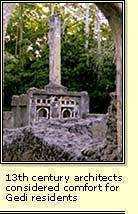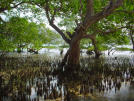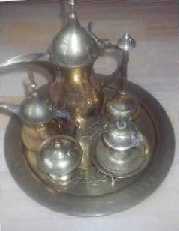
The Waswahili Community Trust UK
(Wadhamini wa jumuiya ya Waswahili)


|
The Waswahili Community Trust UK |
 |
The question that must be at the tip of many of your tongues is probably: WHO ARE THE BAJUNIS? To answer that question as simply as possible, I would say that the Bajunis are the occupants of the Lamu Archipelago and parts of the adjoining Mainland.
Anyone who is familiar with the Bajunis would know that they represent a linguistic as well as a cultural offshoot of the Swahilis, which is relatively unpolluted by modernity and colonial penetration.
To many Swahilis, they represent the most ancient stock of Swahilis which someauthorities believe radiated south to occupy other parts of the East African Coast with a subsequent development of linguistic and cultural diversities peculiar to the differentSwahili peoples stretching from Mogadisho to Mozambique.
Before we return to the Bajunis, we ought to refer those interested to Appendix 1 which givesthe different clans and sub-tribes of the Waswahili and their different dialects.

For centuries, the Bajunis have been the backbone of the mangrove trade both within the East African Coast and between the East African Coast and the rest of the Indian Ocean.
Not many realize what a specialized skill the cutting of mangroves is. Mangroves have been part and parcel of Swahili life for centuries. A whole body of specialized knowledge about mangroves has grown in Swahili lore. To a non-Swahili African, mangroves are just that: mangroves.
To the Swahilis, mangroves consist of diverse trees sharing a common ecological habitat. And the different trees have diverse parts to play in the daily lives of the Swahilis. There are boritis, there are maziyos, there are pau, there are fito, there are upembos, there are kuni, there are magome, and there are vidondo and many others, all of which play different roles in the lives of the Swahilis.
Some of these (eg boritis, maziyo, pau and fito) are used in building traditional Swahili houses. Swahilis generally built two types of houses: multi-story coral-based houses and coral-reinforced bungalows. Both of these use unique technology that includes the use of various types of building mangroves. There are other bits of Swahili building technology that we will refer to later.
For the moment, suffice it to say that mangroveoccupies a critical part of that building technology. But the Bajunis are the specialized mangrove cutters. To an ordinary pair of eyes, mangroves are just mangroves. To the Bajuni mangrove cutter, the exercise is a delicate one calling for an enviable degree of professionalism.
It calls for knowledge of tides. It calls for knowledge of the mangrove swamp habitat. It calls for knowledge of the dangerous snakes and other inhabitants of the mangrove swamp. It calls for knowledge of the species of mangrove trees. It calls for knowledge of the biology of the individual species. It calls for knowledge of the conservation of the different species so that they are a renewable resource vailable year in year out.
Above all, it calls for intelligence, endurance and physical strength par excellence. This was for thousands of years one of the ecological adaptations of the Bajuni. The mangrove poles that were cut by the Bajunis were found up and down the entire eastern seaboard of Africa -- wherever and whenever the Swahilis were to be found. But Bajuni mangroves were not confined to East Africa alone.
They were to be found in many other parts of the Indian Ocean. They were found in Somalia, in Arabia, in Persia, in Kuwait and other such places. It was one of the great industries of East Africa and at the hub of the whole industry was the skill and the hard work of the Bajuni young men who was involved in hewing the mangroves.
One other industry in which the Lamu Archipelago Waswahili were renowned for was that of boat building. Perhaps we should say 'Jahazi' building. These are the dhows in English although the word 'dhow' itself is of Arabic origin. These are Ocean-going vessels, the technology of which starts with their building.
In 1964 when Kenya was hotly debating the use of Kiswahili as a National Language, Professor Hyder made an interesting observation in a paper entitled SWAHILI IN A TECHNICAL AGE. He said: 'Whenever African technology has a parallel in a foreign country, then the African technology is said to be of foreign origin. Whenever African technology has no parallel in a foreign country, then it is of unknown origin.
It is never of African origin!' Here is such an example. Only select species of African trees were suitable for jahazi building. The Lamu Archipelago Waswahili dhow builders knew precisely which these trees were. They knew precisely where they were to be found. In modern lingo, these Swahili dhow builders knew not only the appropriate trees for dhow building, they also knew the ecology of these trees.
More than that: they knew how to conserve these trees so that they constituted a renewable resource that is available year in year out. But then it is not fashionable to praise Africans for their technological skills or conservational sensitivities.
Knowledge of appropriate boat building trees and their ecology is the beginning and not the end of the process of Swahili boat building. But to the Waswahili, boat building is a spectrum of activities -- not just dhow-building.
The Swahilis build vihori, they build mitumbwi, they build madau, they build mitepe, they build ngalawa and they build majahazi. All these forms of boat building needed different trees and different skills not to mention different ecological expertise. And the Swahilis have it. Because for centuries they had been building all these varieties of boats -- boats that were part and parcel of what one might call the Swahili way of life.
But boat building was more than merely knowledge of the trees which went up towards their construction, central as this was in the entire process. Many people do not realize for instance that up to very very recent times, Swahili boats never involved the use of nails, or any metal parts for that matter! Wood, cotton, kingfish oils are among the binding tools used to join planks of wood to a water-proof bond which could withstand the wrath of the oceans.
We appeal for your donation for our charity
Comments and suggestions to improve this website
Your suggestions or concerns about our services
Please send you contributions.
| Thank you Asanteni |
|---|

Copyright© March 2003: The Waswahili Community Trust (UK)
Registered Charity:1083065